Most companies now make software, and many of them use GitHub.
This article covers the main controls to implement on GitHub - but you’ll find that most of these have equivalents on platforms such as GitLab or BitBucket.
Legend
| Description | Label |
|---|---|
| Everyone should do this | 🍩 |
| Slight need for increased security | 🌯 |
| For those that will operate infra supporting systems that are critical | 🌶 |
| Recommendations that require the Enterprise version | 💰 |
Authentication
Authentication is the lynchpin of security on SaaS applications such as GitHub.
GitHub authentication differs to many SaaS products as accounts are global. Developers can carry their accounts from company to company and use them for open source projects.
Require two-factor authentication for everyone in the organization - 🍩
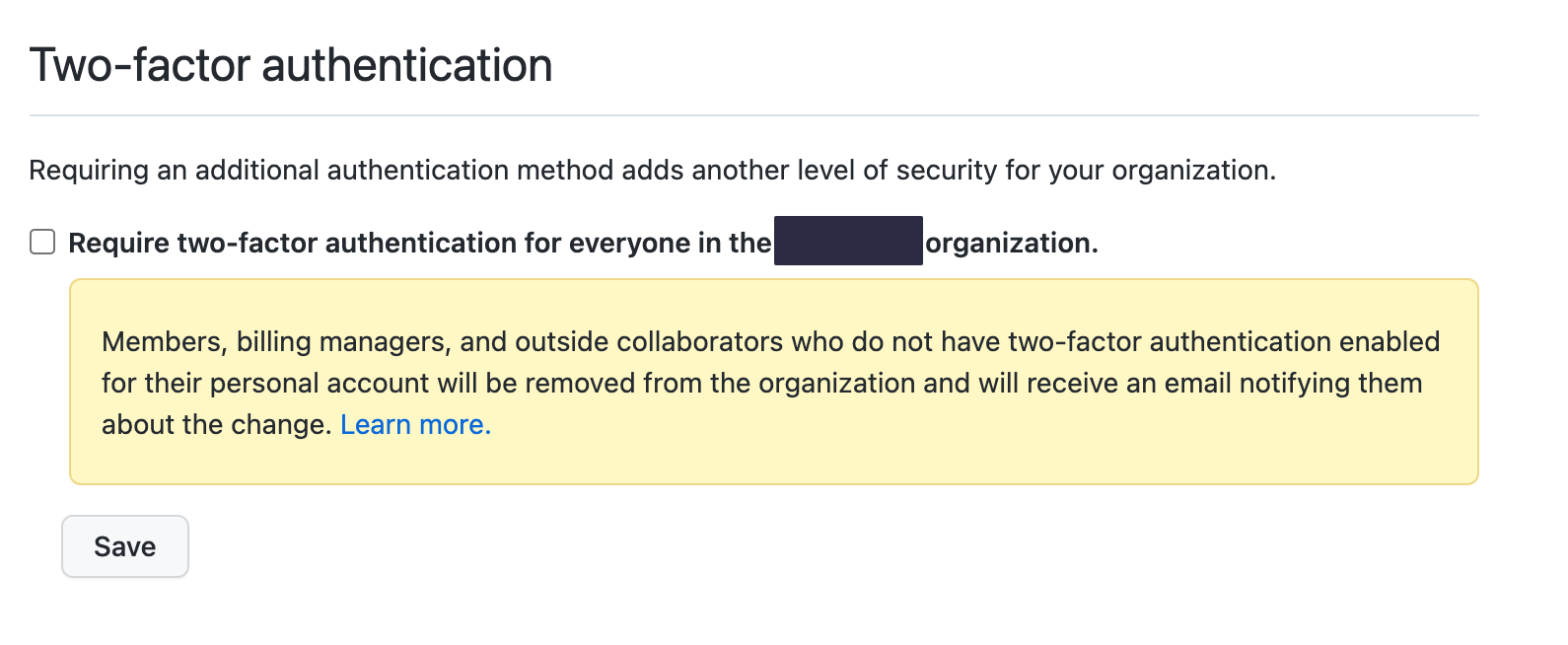
The first thing you should do is enable two-factor authentication. Even if you plan to use Single Sign-On (SSO) with an identity provider that requires SSO, that will protect access to your organization, but 2FA is needed to protect the user account itself.
Single Sign-On (SSO) - 🌯💰
A question people often ask me when setting up their GitHub is
Should we ask our employees to create new, work GitHub accounts?
The answer to that is almost always no, due to a simple feature. If the goal is to make sure data does not get leaked to personal GitHub accounts, it is much easier to use SSO authentication for access to the organization and require an email on your corporate domain for notifications related to your projects.
GitHub notifications are accessible on corporate email, and GitHub sessions with SAML are required to access the repos.
The main downside of leveraging SSO on GitHub is that the price jumps from $4 per user/month to $21.
They’re not going to give up their ranking on sso.tax soon.
- Go to the Organization Security settings page.
- Enable SSO

- Require SSO

- Go to the Verified & approved domains settings page
- Verify your domain(s)
- Require that email notifications only be sent to approved or verified domains.

Administrator/Owner Privileges - 🌯
Keep administrator privileges to the absolute minimum. Keep in mind that anybody with owner privileges on your GitHub environment would be able to disable all the security controls discussed in this document - without being detected, unless you were using the Audit API with automated detection.
Make sure two people can get to owner privileges, but no more.
Repositories
Repositories are the main reason organizations use GitHub. If you’re not going to create them, why bother?
There are many ways to protect repositories and the code they contain. Controlling who can create and configure repositories is needed to limit sprawl and configuration drift.
Member Repository Permissions - 🌯
Ensure GitHub owners are the only ones able to create repositories.
Repository Creation - 🌯
Under Member repository permissions, make sure you uncheck permissions allowing the creation of public and private repositories.
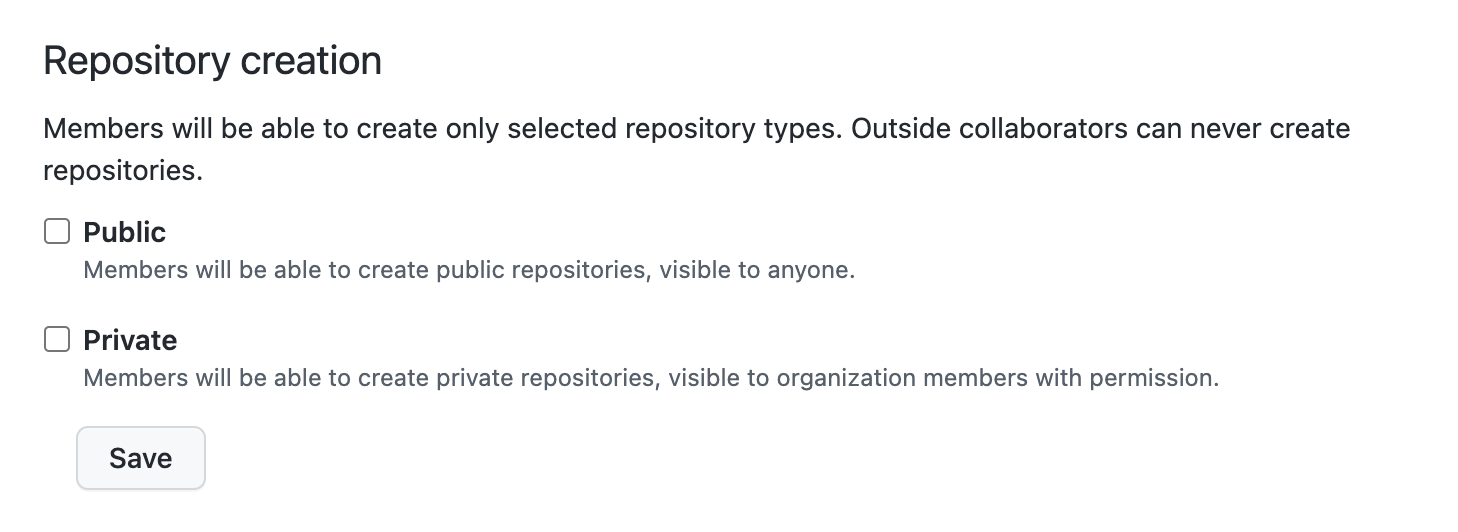
But what if I need people to be able to create repositories? I don’t want to slow them down!
That’s what automation is for!
Repository forking - 🍩
By default, ensure public repositories are the only ones that can be forked by disabling this feature.

Repository Outside collaborators - 🌯
If you are using SAML, and are using that to enforce specific requirements on systems connecting to GitHub, disallow external collaborators. Instead, invite consultants as regular users, but give them an account on your identity provider.

Branch Protection - 🍩
Branch protection is one of the most critical settings, and the main reason you should not have members with administrative privileges on the repositories.
Located in the Branches section of repository settings, you must create branch.
First, enable branch protection on at least your default branch.
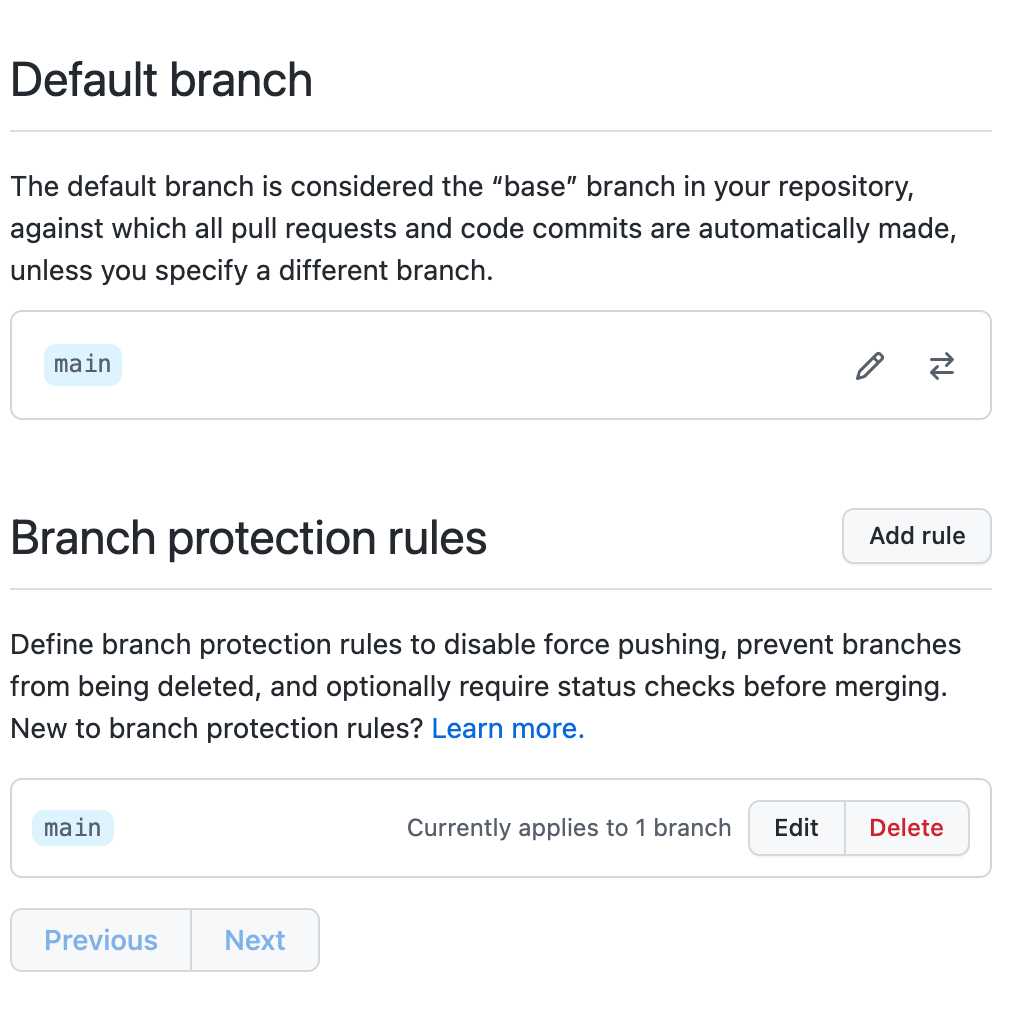
Branch Protection Settings
| Setting | Value | For | Description |
|---|---|---|---|
| Require a pull request before merging | ✅ | 🍩 | Enforce code reviews |
| Require approvals | 1️⃣ | 🍩 | Require at least 1 approval |
| Require approvals | 2️⃣ | 🌶 | Require at least 2 approvals |
| Dismiss stale pull request approvals when new commits are pushed | ✅ | 🍩 | Invalidated existing approvals when changing code |
| Require review from Code Owners | ✅ | 🍩 | Require reviews from specific users or teams in CODEOWNERS |
| Require signed commits | ✅ | 🌶 | Require GPG signing of commits |
| Include administrators | ✅ | 🍩 | Apply rule to repository administrators and GitHub owners |
| Allow force pushes | ⛔️ | 🍩 | Self-explanatory |
| Allow deletions | ⛔️ | 🍩 | Self-explanatory |
Configure the other settings based on your use cases.
Other Settings
Pages - 🌯
To prevent the accidental publishing of internal documentation or other data, ensure that regular members can’t create public pages, but can create private ones.

Admin Repository Permissions
These permissions apply to members that have admin privileges on repositories.
Limit admin privileges on repositories. These privileges are too high to grant to multiple people, as they allow disabling security features such as branch protection. Therefore, we must strive for repositories without administrators, except for service accounts used for automation.
Automation accounts can suffer credential leaks and should also have their privileges as limited as possible.
Repository visibility, deletion and transfer - 🌯
Visibility would allow a member to make a repository public, resulting in accidental or unexpected public publishing of internal repositories.
Deletion and transfer can also be dangerous, as an attacker might attempt to take control of repositories in exchange for a ransom.
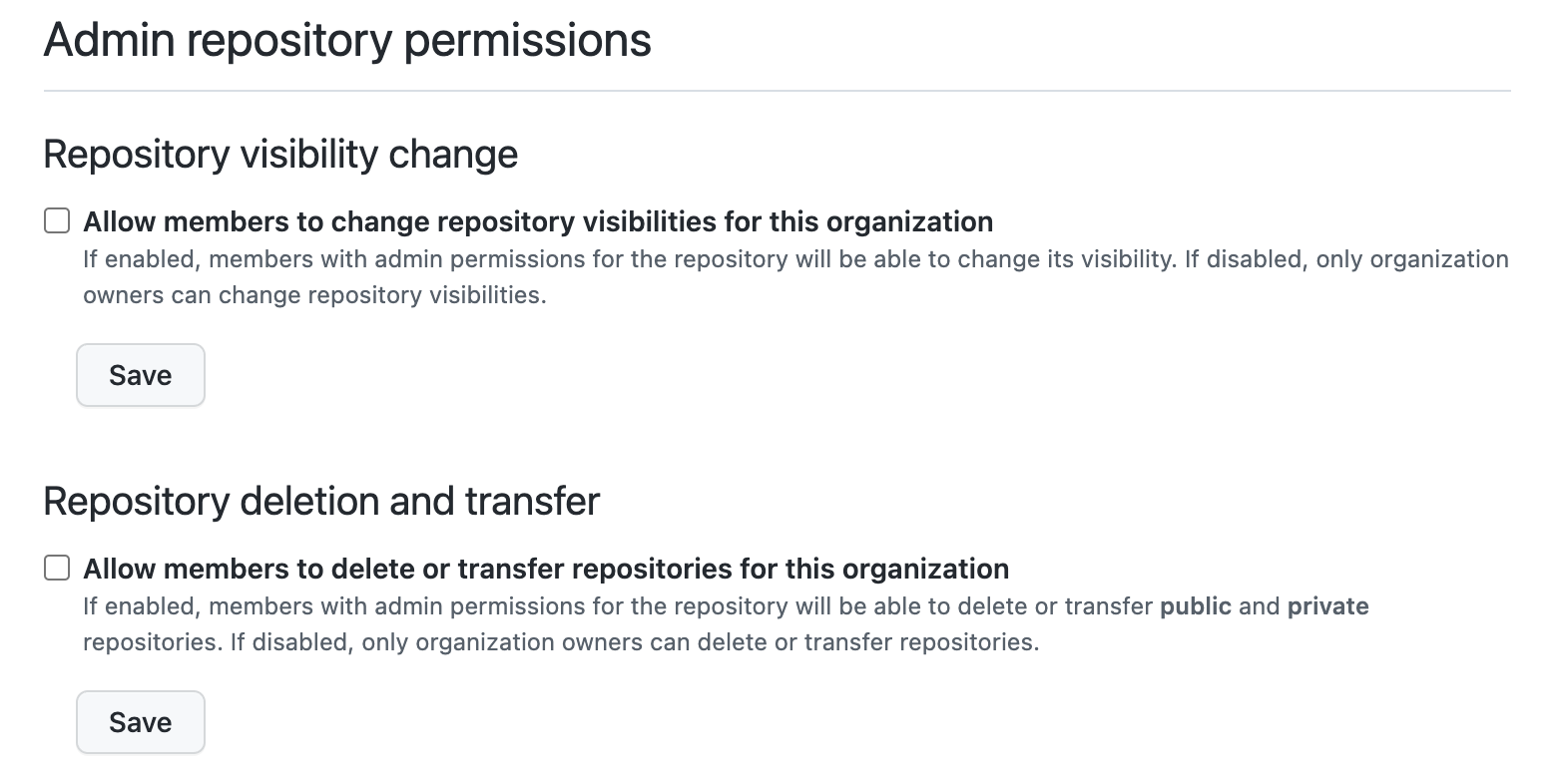
Member team permissions - 🌯
Disable this to prevent members from creating teams, which you can manage via automation.

Member organization permissions - 🍩
Enable this to ensure everyone contributing on your repositories has access to security advisories related to dependencies of the code.

Security & Analysis - 🍩
Depending on your GitHub subscription and the visibility of your repositories, some of these tools might cost extra.
I recommend that you enable all of the free ones and evaluate the paid ones against competitors before committing.
There is no API for configuring these during repository creation, making the configuration of the defaults even more iportant.
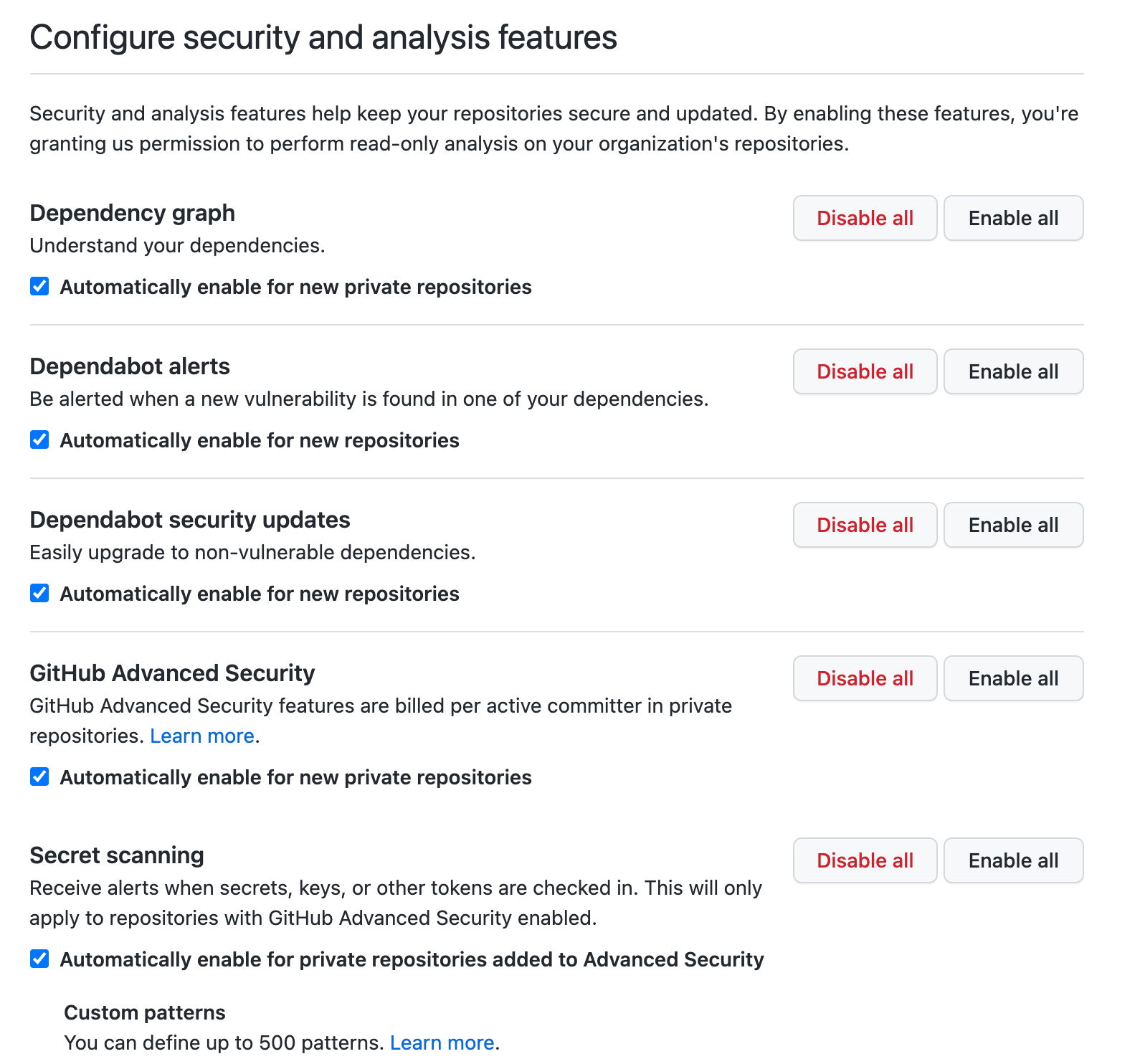
Actions - 🌯 to 🌶
GitHub Actions lets you build workflows directly in GitHub. It can be used as a full-fledged CI/CD, or for simpler tasks.
Actions are code executed with permission to interact with repositories.
If you do not use Actions: block them all for now. If you use Actions and require a high level of security, allow specific Actions or limit their default access to read-only.
If you are in the middle, allow Actions that are made by GitHub directly, as well as from verified creators.

Codespaces - 🍩
Codespaces is a cloud-based development environment powered by Visual Studio Code. Its name is also real close to the name of a company that closed after getting wrecked by an attack, but it is unrelated.
If you do not intend on using Codespaces, do not allow it, as the VMs it uses are relatively expensive.
Keep in mind that this feature exists, especially if you start thinking of ways to allow developers to work in standardized environments without having too much control on their actual computers.
Automating this - 🌶
See automation!